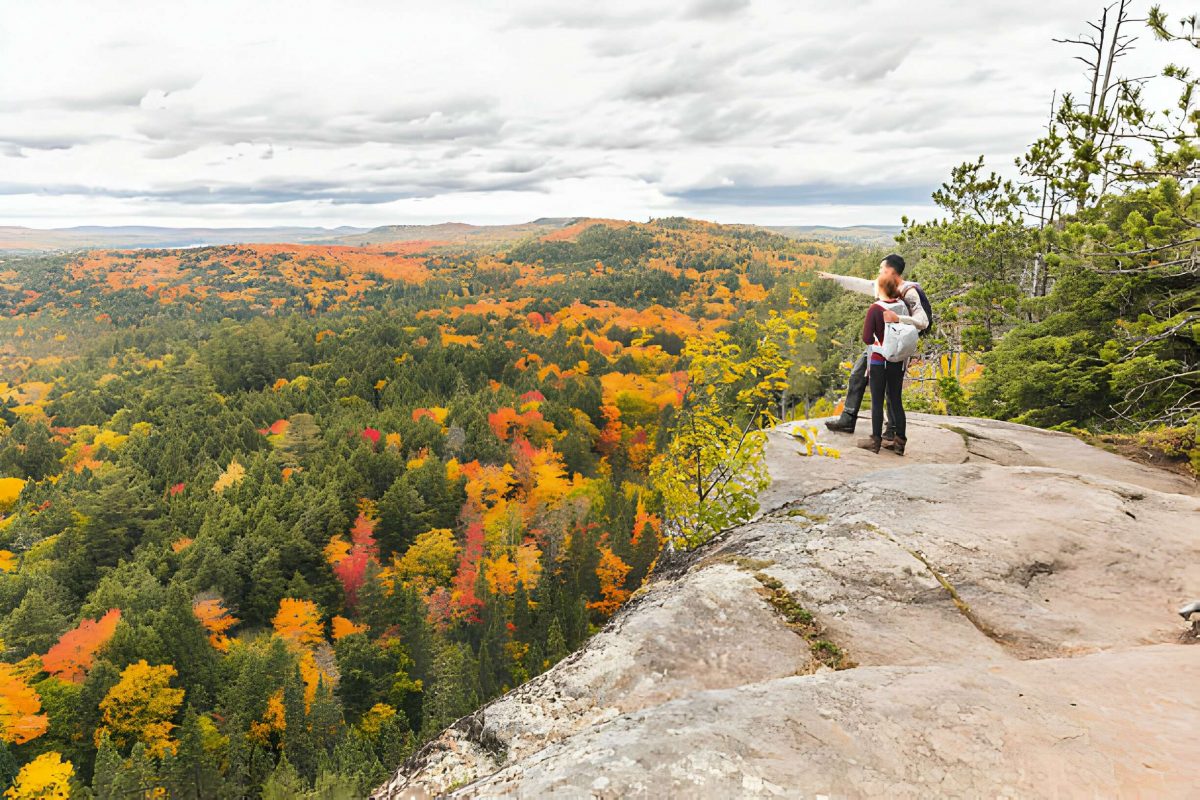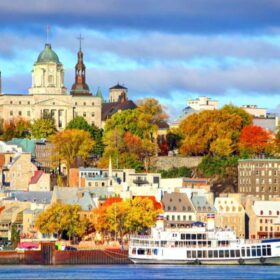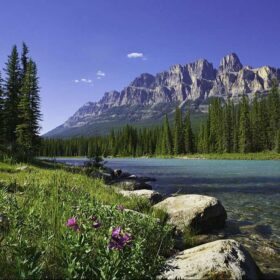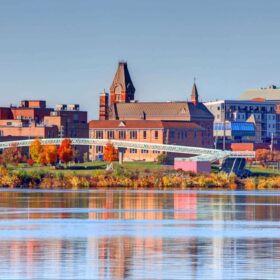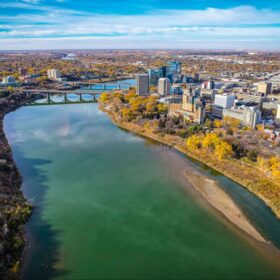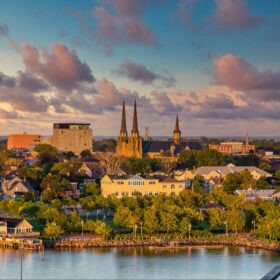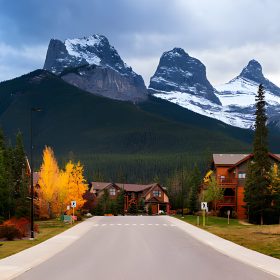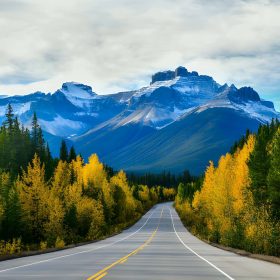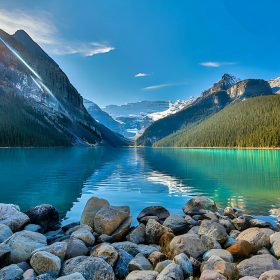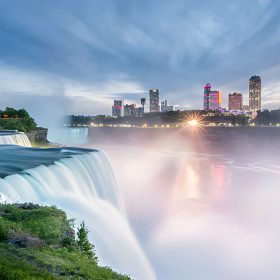Canada boasts breathtaking landscapes, encompassing majestic mountains, pristine lakes, and dense forests with towering trees. While some remarkable spots are accessible by car, many of the country’s most exceptional places can only be explored on foot. In essence, the best hikes in Canada, which we have outlined below, offer a compelling reason to strap on your hiking boots.
From the rugged east coast of Newfoundland to the untamed west coast of Vancouver Island and the colossal peaks of the Yukon, we present our favorite opportunities to embark on hiking adventures. Whether you lean towards a short and easy stroll or crave a challenging trek, you will discover a trail perfectly suited to your preferences on this list of the best hikes in Canada.
1. West Coast Trail, British Columbia

Prepare your backpack, secure your hiking poles, and fasten your gaiters: if the idea of trekking the 75-kilometer West Coast Trail has crossed your mind, get ready for an exhilarating adventure.
Nestled in the Pacific Rim National Park Reserve on Vancouver Island in British Columbia, the West Coast Trail showcases the rugged beauty of the coast. Traversing along the shoreline, you will navigate sandy beaches, clamber over massive boulders, and pass by stunning caves. Inland, you’ll ascend and descend precarious wooden ladders (over 100 of them!), traverse fallen logs, ride cable cars across rivers, and accumulate a substantial amount of mud on your hiking boots (hence the necessity of the previously mentioned gaiters).
Nights will be spent sleeping on beaches beneath the stars, offering insights into the life of a lighthouse keeper, and you’ll likely encounter the notorious West Coast rain – but regardless, it will be a journey etched into your memory forever.
Accommodation: Best Resorts on Vancouver Island, British Columbia
Read More: Best Hiking Trails on Vancouver Island, British Columbia
2. Plain of the Six Glaciers, Alberta
Positioned in the Canadian Rocky Mountains near Lake Louise, the Plain of the Six Glaciers stands out among the many popular hiking trails in Banff National Park, showcasing the Rockies’ breathtaking beauty. Regarded as a moderate hike, the out-and-back trail spans 13.8 kilometers.
Commencing at the renowned (and breathtaking) Lake Louise, the trail ascends 587 meters gradually through switchbacks, providing awe-inspiring views of the turquoise lake below. Approaching the culmination of the hike, the trail unveils a meadow, creating the illusion of being in the heart of nowhere. Surprise! There’s a quaint teahouse nestled in the alpine meadow, operational during the season (cash only).
Unless you are equipped for winter conditions, it is advisable to tackle this trail in the mid-summer months – otherwise, be prepared to encounter ice and snow. Given the unpredictable nature of Rockies weather, it is wise to pack layers throughout the year, particularly since conditions can change swiftly, especially as you ascend to higher elevations.
Read More: Best Trails and Hikes in Lake Louise
Accommodation: Best Resorts in Alberta
3. Lion’s Head Trail, Ontario
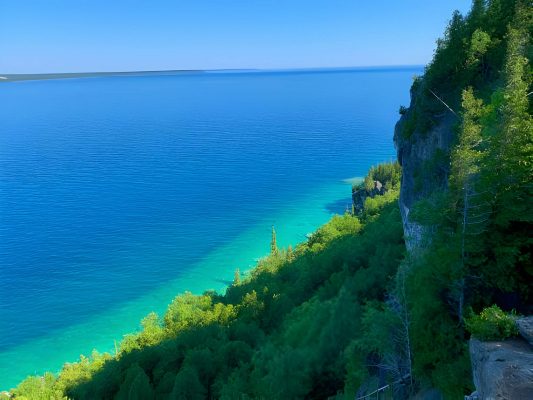
For stunning vistas of Georgian Bay, venture to the Bruce Peninsula and embark on the Lion’s Head Trail, a segment of the 890-kilometer Bruce Trail.
Covering around 15 kilometers (with the option to shorten or extend the hike slightly), this trail commences in a shaded forest, eventually guiding you to precarious 60-meter limestone cliffs with panoramic views of the bay. The sight of the water is truly awe-inspiring.
As there are no guardrails, exercise caution with each step! It is also noteworthy that a significant portion of the trail traverses rocky terrain, so ensure you wear robust footwear.
4. Grizzly Lake Trail, Yukon
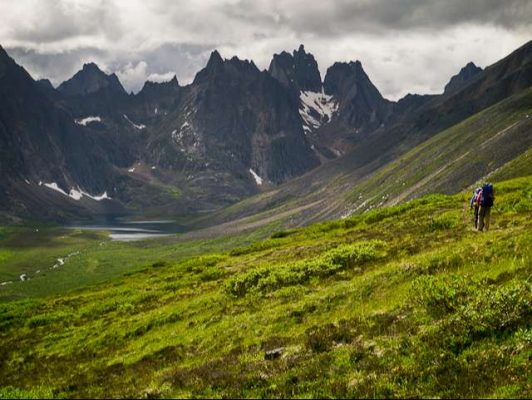
Tombstone Territorial Park in the Yukon boasts one of the most distinctive landscapes in the entire country. With the Dempster Highway running through it and rugged peaks stretching as far as the eye can see, the park provides a choose-your-own-adventure hiking experience. There are few formal, marked trails, so your best approach is to visit the information center for guidance on where to explore.
For those who prefer a designated trail, consider the hike to Grizzly Lake. Covering 11 kilometers (one way) with a 797-meter elevation gain, most hikers opt to camp overnight by the lake. However, securing a permit is necessary, and the number of permits issued is limited. If you lack the time or are unlucky in obtaining a permit, completing the first four kilometers of the trail as an out-and-back hike is still highly rewarding.
The journey takes you through alpine meadows and resilient tundra, navigating rocky talus slopes along exposed ridges as you approach the lake. Upon reaching Grizzly Lake, you’ll grasp the allure of the surroundings, with jagged mountain peaks towering over the lake reminiscent of Dracula’s castle.
5. Skyline Trail, Nova Scotia
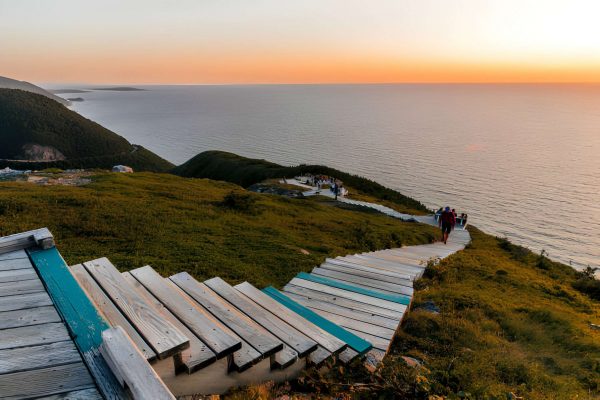
Cape Breton’s Highlands National Park is widely regarded as one of Canada’s best national parks, mainly due to the consistently stunning views that encompass rolling hills, coastal cliffs, marshy wetlands, and the seemingly endless ocean.
Among the park’s most sought-after hikes is the Skyline Trail, renowned for providing one of the most exceptional vantage points in the entire park. The hike can be undertaken as a 6.5-kilometer out-and-back journey, or hikers can opt for a slightly longer 8.2-kilometer loop.
The hike is of a manageable length, allowing visitors to experience Nova Scotia’s awe-inspiring landscapes within just a few hours. Although relatively easy, the trail features a moderately challenging element—a section of stairs.
In addition to offering breathtaking views over the Atlantic, the Skyline Trail presents abundant opportunities for wildlife observation. Keep a lookout for bald eagles, whales, bears, and, notably, the park’s most iconic resident—moose!
Read More: Best Things to Do in Cape Breton Island
6. Garibaldi Lake Hike, British Columbia
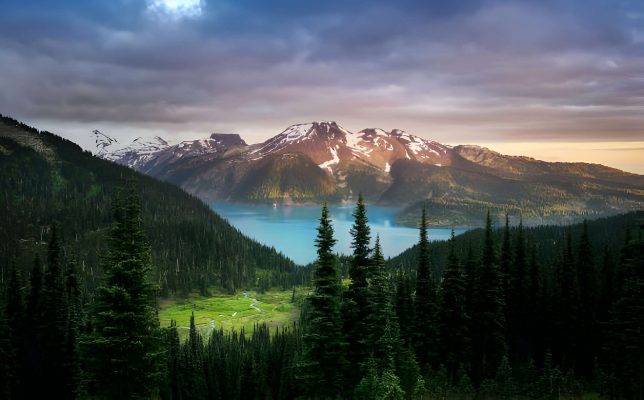
To reach the breathtaking Garibaldi Lake, one of most beautiful lakes in Canada, travel north from Vancouver towards Whistler and park your car at Rubble Creek. From there, embark on a robust nine-kilometer (one-way) ascent to the pristine waters of Garibaldi Lake.
The trail commences with an extended stretch of switchbacks through a vast forest of towering trees. The climb is gradual yet steady, gaining 820 meters in elevation. Your efforts will be instantly rewarded as the trail emerges into alpine meadows adorned with vibrant wildflowers, ultimately leading to the glacier-fed Garibaldi Lake.
While camping is allowed at the lake, it’s crucial to reserve your campsite in advance through Garibaldi Provincial Park. Given the trail’s popularity, especially on weekends or holidays, it is a demanding trek that promises rewarding views, making the exertion well worthwhile.
Read More: Best Hikes near Whistler
7. Grey Owl Trail, Manitoba
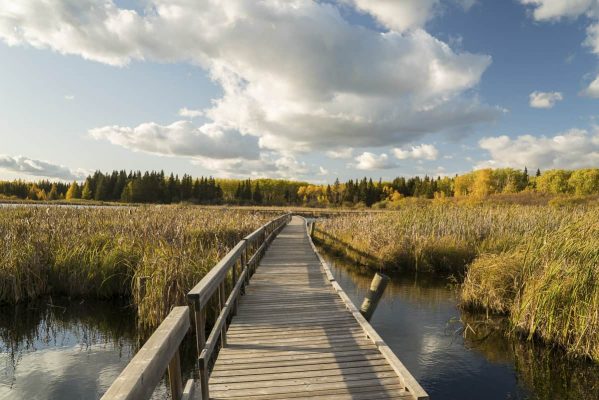
Explore the forests of Riding Mountain National Park by hiking the scenic Grey Owl Trail – a must-see experience. Spanning 14.2 kilometers (round trip), this trail meanders through the woods, providing ample shade. Keep an eye out for signs of wildlife, such as tracks in the dirt or claw marks on the trees, as Riding Mountain is renowned for its gray wolf population.
During the summer, the trail comes alive with bursts of color amid the brown earth and green trees, featuring fluttering butterflies and vibrant wildflowers in full bloom. In winter, the trail transforms into a snowy wonderland accessible by snowshoes or skis.
Regardless of the season, you’ll encounter Grey Owl’s rustic log cabin at the midpoint. It serves as the perfect spot for a picnic or to enjoy a thermos of hot tea before embarking on the return journey to the trailhead.
Read More: Top Tourist Attractions in Manitoba
8. East Coast Trail, Newfoundland

Ready for an extraordinary adventure? Explore the 336-kilometer East Coast Trail along Newfoundland’s eastern coastline, where certain sections trace the rugged shoreline, while others wind through charming communities.
Rather than tackling the entire trail, many choose to explore smaller segments, catering to a wide range of preferences, from strolls to demanding hikes designed for seasoned adventurers.
Opt for the Silver Mine Head Path if you prefer an easy option – a seven-kilometer (round trip) trail that traverses a sandy beach, ventures into the woods, and crosses a river. For those seeking a true challenge, consider the White Horse Path, an arduous 18.2-kilometer (one-way) hike offering breathtaking coastal views.
Accommodation: Where to Stay in Newfoundland: Best Areas & Hotels
9. Joffre Lakes, British Columbia
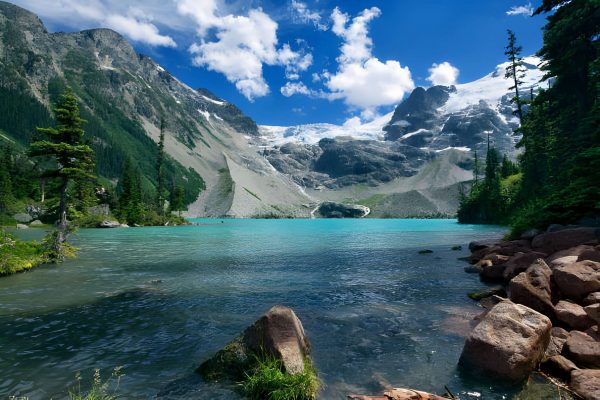
Located north of Whistler and Pemberton, Joffre Lakes Provincial Park features a chain of three incredibly turquoise lakes, reachable via a 7.7-kilometer (round trip) hiking trail.
The journey to the initial lake is relatively straightforward while reaching the second and third lakes entails a steeper ascent that promises an elevated heart rate. Along the way to the third lake, there’s a brief side trip leading to a waterfall – consider it a reward for a little extra effort.
During the summer, Joffre Lakes can attract large crowds, emphasizing the importance of responsible hiking to preserve the fragile ecology of the area. Despite their beauty, the lakes are fed by surrounding glaciers and maintain a very cold temperature throughout the year, making swimming not advisable.
10. Iceline Trail
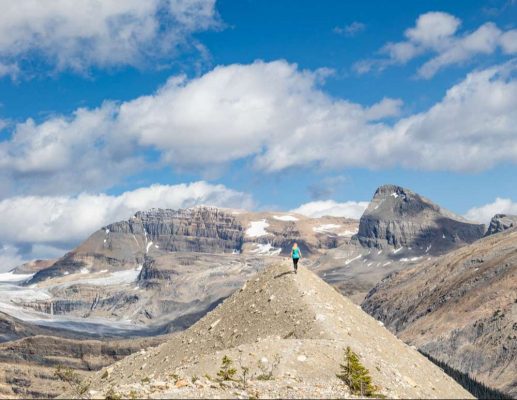
How about embarking on a hike that grants you panoramic views of an 833-foot-high waterfall, meanders along the base of a glacier, and offers breathtaking vistas (along with challenging inclines)? If this sounds appealing, then set your hiking boots on the path of the Iceline Trail in Yoho National Park.
This trail takes a steep ascent up the side of a valley before leveling off to provide a relatively flat walk with sights of Takakkaw Falls on one side and the Emerald Glacier above you. You can hike as far as you desire, but most individuals opt to ascend to the level area and walk to the large terminal moraine, as pictured above, for the optimal viewpoint.
11. Fundy Footpath, New Brunswick
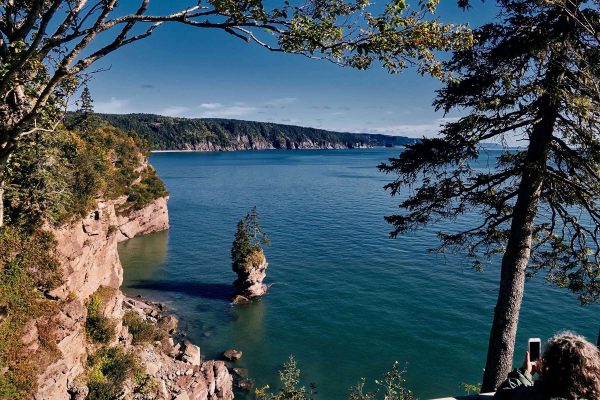
Extending 47.5 kilometers along the Bay of Fundy – renowned for having the world’s highest tides — the Fundy Footpath is not for the faint of heart. It demands strenuous effort, with the trail continually ascending and descending, resulting in a cumulative elevation gain of over 2,750 meters. By the conclusion of the hike, your legs will undoubtedly feel the strain – but the smile on your face will be impossible to erase.
This trail is a point-to-point route that encompasses a blend of forested sections and beach walks, typically requiring around four days for most hikers to complete. Wilderness campsites are strategically positioned at various points along the trail.
Waterproof hiking boots are essential companions on the Fundy Footpath as the hike involves river crossings and passes by waterfalls. Additionally, being mindful of the tides is crucial, as they can impact the pace of the hike – a tidal chart is a necessary inclusion in your gear kit. While it involves strenuous effort, the trail rewards you with exceptional viewpoints that would otherwise remain inaccessible.
Read More: Top Tourist Attractions in Bay of Fundy, Nova Scotia
12. The Crack Trail, Ontario
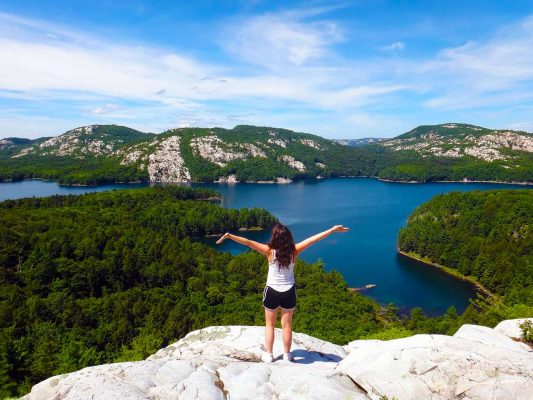
There’s a reason why renowned Canadian artists and Group of Seven members A.Y. Jackson, A.J. Casson, and Franklin Carmichael were attracted to Killarney Provincial Park. Positioned overlooking Georgian Bay, the park boasts few amenities – instead, it provides a rare opportunity to fully immerse yourself in true wilderness.
To truly experience the solitude, consider hiking the Crack Trail, a moderately challenging six-kilometer out-and-back trail offering exceptional lake views. The trail begins relatively uneventfully, following an old logging road until it intersects with the La Cloche Silhouette trail. Passing by the picturesque Kakakise Lake, as the trail ascends, you will realize you’re nearing the Crack.
So, what exactly is the Crack? True to its name, it is a substantial fissure within a quartzite wall, and navigating this narrow passage is essential to continue the hike. This section of the trail is rocky with unstable footing, so proceed with caution. On the opposite side of the crack, breathtaking views of Killarney Lake unfold – a rewarding sight for your hiking endeavors.
Read More: Best Resorts in Ontario, Canada
13. Centennial Ridges Trail, Ontario
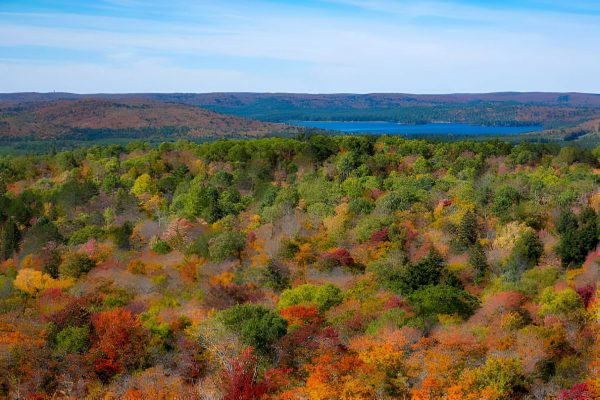
Algonquin Provincial Park is a sought-after destination for nature enthusiasts seeking an escape. While the park is renowned for canoeing, it also offers excellent opportunities for a serene hike. Among the many great options, Centennial Ridges stands out, guiding hikers through a pair of high ridges and offering superb views across the park.
Spanning 10.4 kilometers, the Centennial Ridges Trail forms a loop, eliminating the need to backtrack. With an elevation gain of 460 meters, it is considered moderately challenging, attributed in part to the rocky and root-laden trail. However, individuals in decent physical condition can typically complete the trial in under four hours.
While the ridges await towards the end of the hike, there are additional scenic viewpoints along the way, including a couple of beaver ponds that are worth a visit. It’s an unparalleled setting to clear your mind and appreciate the finest work of Mother Nature.
Accommodation: Best Resorts in Muskoka
FAQs
Q: Are permits required for hiking in Canadian national parks?
A: Permit requirements vary, so check the specific regulations for the park you plan to visit.
Q: What is the best time to hike in Canada?
A: The summer and early fall months generally offer the best hiking conditions, but it varies by region.
Q: Are there guided hiking tours available in these parks?
A: Many parks offer guided tours; check with park authorities for available options.
Q: How can I prepare for hiking in arctic conditions, such as Auyuittuq National Park?
A: Adequate cold-weather gear, knowledge of the terrain, and proper planning are essential.
Q: Can I camp along the hiking trails in these national parks?
A: Some parks allow backcountry camping, but regulations and permits apply. Check with park authorities for details.

